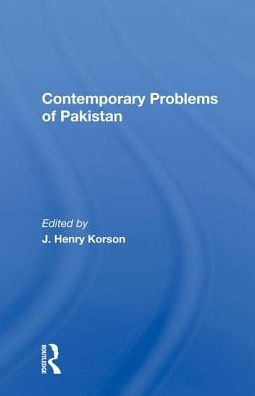Contemporary Problems Of Pakistan
Despite weeks of negotiation with the leaders of the Congress Party and the Muslim League, the British Cabinet Mission failed in its efforts to maintain a united India. As a result, in 1947 the Asian subcontinent was partitioned into a Muslim-majority but geographically divided West and East Pakistan and a Hindu-majority India. Of the nations created after World War II, Pakistan is one of only two founded on a religious ideology: Islam. But religious cohesion did not mitigate the monumental problems that confronted Pakistan's leadership as it strove to establish the basic economic, political, and social institutions needed to govern a geographically divided nation. After forty-six years of independence, Pakistan faces the twenty-first century with great potential, yet it must surmount tremendous barriers in order to attain its ambitious goals. This book considers the range of social, political, and economic problems facing Pakistan today. The contributors analyze the country's attempts to control explosive population growth, ease ethnic confrontations, and cope with a flood of Afghan refugees as well as to deal with the demands for education, women's rights, economic growth, and greater democracy.
1001342196
Contemporary Problems Of Pakistan
Despite weeks of negotiation with the leaders of the Congress Party and the Muslim League, the British Cabinet Mission failed in its efforts to maintain a united India. As a result, in 1947 the Asian subcontinent was partitioned into a Muslim-majority but geographically divided West and East Pakistan and a Hindu-majority India. Of the nations created after World War II, Pakistan is one of only two founded on a religious ideology: Islam. But religious cohesion did not mitigate the monumental problems that confronted Pakistan's leadership as it strove to establish the basic economic, political, and social institutions needed to govern a geographically divided nation. After forty-six years of independence, Pakistan faces the twenty-first century with great potential, yet it must surmount tremendous barriers in order to attain its ambitious goals. This book considers the range of social, political, and economic problems facing Pakistan today. The contributors analyze the country's attempts to control explosive population growth, ease ethnic confrontations, and cope with a flood of Afghan refugees as well as to deal with the demands for education, women's rights, economic growth, and greater democracy.
190.0
In Stock
5
1

Contemporary Problems Of Pakistan
232
Contemporary Problems Of Pakistan
232
190.0
In Stock

Product Details
| ISBN-13: | 9780367011864 |
|---|---|
| Publisher: | Taylor & Francis |
| Publication date: | 06/07/2019 |
| Pages: | 232 |
| Product dimensions: | 5.88(w) x 9.00(h) x (d) |
From the B&N Reads Blog
